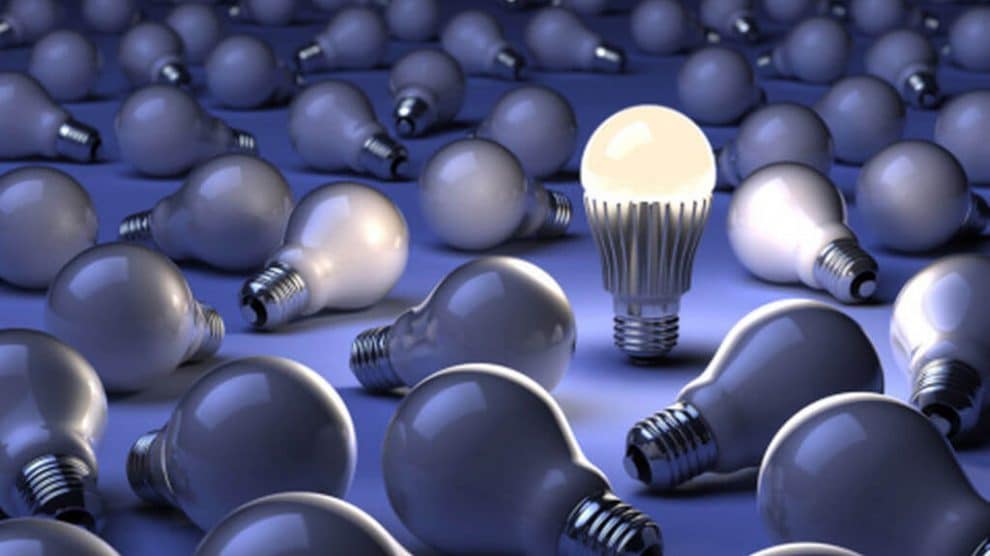A light emitting diode (LED) is a semiconductor light source which emits light. It is a chip of semiconducting material usually like silicon, unlike CFL which contain mercury. The duration of LED light bulb is several times greater than standard incandescent lamps and more efficient than fluorescent bulbs. It works on the principle of “Electroluminescence” where electrons are recombining with electron holes, releasing photon energy when a voltage applied to the leads of LED.LEDs are available in ultraviolet, visible and infrared wavelengths. There are different colors of LEDs are available. They are,
- Infrared
- Red
- Orange
- Yellow
- Green
- Blue
- Violet
- Purple
- Ultraviolet
- Pink
- White

Top Ten Biggest & Fascinating Mysteries Of The Universe !! Have You Ever Heard About These?
EVERYTHING ABOUT LED LIGHT BULBS-
Formation of white light:
Primary colors are like red, green and blue form white light from LEDs. Using phosphor material to convert light from a blue or Ultraviolet LED to white light also works. There are three different methods to produce white light from LED.
- The combination of UVLED and RGB phosphor produces white light.
- The combo of a blue LED, and a yellow phosphor which is two complementary colors produces white light.
- The mix of blue, green and red LEDs form white light.
Appearance of LED light:
Most of us used to buy any bulb which would offer an affordable price. There are three different types of color temperatures.
Daylight: These are white light bulbs and look bright. It contains a high amount of blue light which can reduce or even cease melatonin production in the brain, leading to insomnia during night time. It is generally between 5000 and 5500k.
Warm white: Warm white bulbs are similar to an incandescent or CFL bulb. It maintains the appearance of the traditional lamp which we have. It is readily available. It is generally between 2800k and 3300k color temperature.
Cool White: Cool white bulbs rare little white than warm white bulbs but not as bright as daylight. It is suitable for almost any situation. It is generally between 4200k and 4500k temperature of color.
LED light bulbs and its heat-
Heat is the invader of a LED lamp. It generates high heat which should be dissipated or moved away from the LED to live long which is the expected lifetime of 40,000 hours or more. For that many manufacturers have integrated an aluminum or ceramic body to increase the total area where heat can escape and get dissipated. Without the dissipation of heat created by operating current applied to the LED to generate light, which will get premature death.
LED Vs CFL-
The lifespan of a LED is usually up to 50000 hours while the lifespan of a CFL is up to 8000 times.LED bulb is more expensive than a CFL bulb.LED bulb remains cool when lightening up whereas CFL bulb gets heated up quickly.LED consumes less electricity and more efficient than CFLs. The primary difference between the LED and the CFL is durable and long lasting. The most prominent feature of LED bulbs is that they can recycle.
Eco-friendly LEDs-
LEDs are eco-friendly because it cuts carbon emissions. When we use LED instead of incandescent bulbs, reduces harmful carbon dioxide levels released into the air. The less energy of LEDs to power plants needs to make through the burning of fuel; fewer carbon emissions released into the environment. Moreover LED light does not waste energy. CFLs contain heavy metals like mercury and lead cause contamination in the air we breathe. On the other hand, LEDs does not contain any of these harmful metals.
LEDs developments-
SMD (Surface Mounted Device) LEDs is the LED’s new generation of lighting. Nowadays, LED bulbs also contain SMD chips which offer brighter than older generations of LED. The highlight of the SMD is the LED is directly soldered on the printed circuit board results, requiring less space and improves thermal connection.
COB (chip on board) is a thing where chips with multiple diodes are used. It is the most recent development in LED technology.COB with no casing enables the much denser LED array of light. A consistent light beam of COB offers excellent optics. It provides best conditions for optimal cooling which will increase efficiency and strengthens the overall life of the lamp.
Advantages:
Some of the benefits of LEDs are,
Efficiency: LED emits more lumens than ordinary incandescent bulbs.
Size: LEDs are minuscule in size and can attach to any printed circuit boards quickly.
Color: Without using any color filters, it can emit light, and this is more efficient and can lower costs.
Duration: It has a long useful life.
Shock Resistance: Solid state component, LEDs are difficult to damage with external shock.
Cool light: LEDs radiate little heat that can cause damage to only sensitive objects. Heat dispersed through the base of the LED.
Disadvantages:
- Voltage sensitivity
- Depends on temperature
- Light pollution
- Instability efficiency
Applications:
The primary applications of LEDs are
- Visual signals
- Illumination
- Reverse bias mode operation
- Lighting
- Data communication
- Indicators
- Fiber optics free space optical communication
